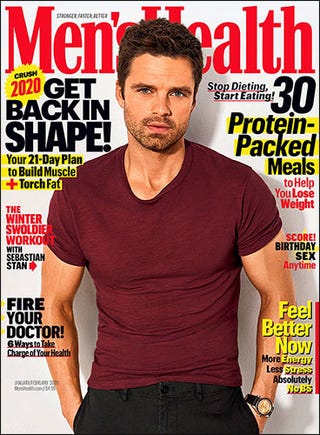This is Your Quick Training Tip, a chance to learn how to work smarter in just a few moments so you can get right to your workout.
If you’ve ever tried to lose weight, you’ve probably been told that you can’t out-exercise a bad diet. The sentiment is true. All the workouts in the world won’t help you shed fat if you consume more calories than you burn each day. Indeed, if your caloric intake exceeds the capacity of your metabolism, you’ll just keep adding inches to your waist—that’s just basic math.
Getting a handle on your caloric needs starts with knowing your basal metabolic rate (BMR), which is the number of calories you need to consume per day for your body to carry out its essential (largely autonomic) life-preserving functions, such as breathing, circulating blood, regulating hormones, and producing and repairing cells (including muscle fibers).
Layered on top of your BMR are the calories you burn through digestion (i.e., the thermic effect of food), “non-exercise” physical activity (e.g., walking and fidgeting), and exercise. But since your BMR accounts for upwards of 60 percent of your total daily energy expenditure (TDEE), it’s a good place to start when determining the number of calories you require to sustain your current weight (and from which you need to subtract to start losing weight).
The most accurate way to gauge your BMR is to have it tested in a laboratory, but you can also get a fairly accurate estimate by using any of a handful of common formulas. Trainers often favor one called the Cunningham equation, but it requires you to know your lean (fat-free) body mass, which you won’t know unless you have a scale that estimates body fat percentage. A much simpler—and, according to a recent study, more accurate—formula for men is the Harris-Benedict Equation:
BMR = (88.4 + 13.4 x weight in kilograms) + (4.8 x height in centimeters) – (5.68 x age)
If you’re terrible with equations, never fear—there are countless tools available online to calculate your BMR. As long as you can input your height, weight, and age, you can get a pretty good idea about your needs.
Knowing your BMR is step one in fine-tuning your daily calorie intake to match your fitness goals, but just as important—especially if your focus is fat loss—is stoking that metabolic furnace so that it burns as hot as possible.
Your move: Push yourself in every workout. Exercise represents the smallest percentage of your TDEE (about 5 to 10 percent), but it also has perhaps the greatest potential influence on your BMR. That’s because when you’re done working out, your body shifts many aspects of your BMR (e.g., hormone production, cellular repair) into high gear to help you recover from and adapt to your training.
It doesn’t matter what kind of exercise you do (high intensity interval training [HIIT], steady state cardio, strength training, etc.)—as long as you give your workout everything you’ve got, you’ll reap the metabolism-boosting, fat incinerating rewards of the “afterburn effect.”

Men’s Health Subscription
SHOP NOW
Source: Read Full Article
